The two special forces fought in Falklands War at opposite sides. At one side was Argentina and the other was Great Britain. Units involved were:
- 601 & 602 Commando Company (Argentina)
- Special Air Service (SAS) (Great Britain)
- Mountain & Artic Warfare Cadre (Great Britain)
- 45 Commando Royal Marines (Great Britain)
Introduction
During the South Atlantic Conflict in 1982, the Argentine forces defending the islands -and to counter British Forces-, deployed two Commando units which operated under the command of the Argentine Army.
The Argentine special operating forces consisted of two Companies with numbers 601 and 602. Company 601 began operating since the beginning of the conflict, while the 602 Company was assembled later and saw action once the war was already reaching it’s most violent peak.
Company 601 was led by 34-year-old Major Mario Castagneto. 39-year-old Major Aldo Rico was in charge of Company 602. 601 & 602 Commando Companies fought bravely in several occasions including Top Malo House, Mount Kent, Murrel River Bridge and Many Branch Point.

Action at Port Howard
After the British landed in San Carlos in the Soledad Island (East island) on May 21st, 1982, the 601 Commandos were sent to the Gran Malvina (West Island) island at Pt. Howard precisely, to gather intel on the enemy who had been spotted in the surrounding area, and provides anti-aircraft cover with Blowpipe missiles to the 5th Regiment stationed at Port Howard, which lacked AA capabilities.
The commando units gathered information close to enemy lines, and set up observation posts. Company 601 was responsible for downing a Harrier GR3 in May 21st, 1982.
Combat at Top Malo House
Around the May 29, 1982 a patrol of twelve 602 Commandos led by Capt Vercesi, had been walking up and down of Mt. Simon located in Soledad Island. They had been trying to communicate with their HQ to report enemy movement. After crossing several creeks, the commandos were beginning to develop hypothermia.
Temperatures were below 0. The patrol reached the Top Malo House, which was an abandoned sheep establishment and decided to enter the house in order to dry their clothes and rest through the night.
Capt. Vercesi, recalled later that he made a terrible choice entering the house but he knew that they were not equipped to survive the cold night, wet as they were.
Little they knew that they had been spotted by an observation post of the SAS which quickly notified the British Command who dispatched the Mountain and Arctic Warfare Cadre to locate and destroy the Argentine special forces.
A group of 19 men led by SAS Captain Boswell, reached the house the next morning and attacked the Argentine commandos with 66 mm LAW rocket launchers, Carl Gustav anti-tank rockets and M-79 grenade launchers.
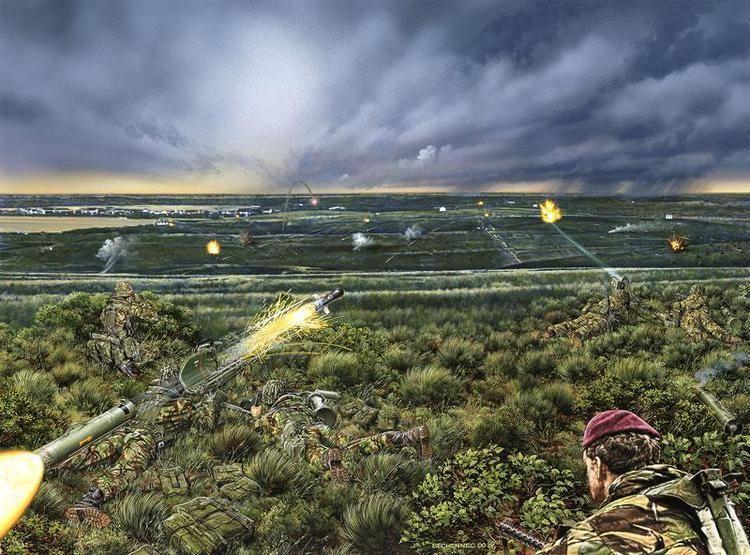
The house was quickly set on fire as a result of these attacks. A Lebanese Argentinean commando Sgt. Mateo Sbert was killed in the process and so was Lt. Espinosa who was the group sniper. Espinosa drew fire upon himself from the second story allowing his friends to come out from the house to return fire.
The Argentine commandos included 1st Lt. Horacio Losito, a brave man who counter-attacked and received multiple wounds in the process. Losito and his commandos ran towards the British shooting from the hip round after round of 7.62 mm caliber. The British were caught by surprise and could not believe the Argentine was counter-attacking after having been subject to rocket fire.
The British were shooting with American made M-16 and their 5.56 mm caliber bullets somehow allowed the Argentines to get up even after being hit. Lt. Losito collapsed several times, and in one occasion while shooting towards the enemy, he shouted:
Cristina! I won’t be able to return! Cristina was his wife. Losito eventually fainted due to blood loss.
The 602 Commandos, were eventually surrounded and reported running out of ammo. Several men were already wounded and therefore Capt. Verseci ordered surrendering.
Captain Verseci upon seeing his friend Mateo Sbert lying dead on the ground said in an emotional tone:
“Turco que me has hecho!” “Turk* what have you done to me!” (*All Lebanese and Syrian immigrants had historically entered Argentina with Ottoman passports).
Sgt. Mateo Sbert’s wife who was pregnant at the time of his death would deliver a young boy which would later become a commando too, and would eventually marry Capt. Verseci’s daughter.
Assault on Mount Kent
At the end of May, advanced patrols of the G-Squad Special Air Service had established that a number of high summits overlooking the Argentine defenses around Port Stanley were largely defenseless, especially after the Argentine air assault team- the Solari combat team (Company B, 12 Infantry Regiment)- went by helicopter to Pradera de Ganso (Goose Green) and the fourth infantry regiment had been ordered to leave Mount Challenger and take up new positions in the Mt. Two Sisters and Harriet.
An initial element of reconnaissance of the D Squadron Major Cedric Delves was inserted into the Mount Kent area by helicopter on May 25th, and allowed the rest of the squadron to arrive safely on May 27th at the time to face a strong insertion of the Special Forces of Argentina, under the command of Captain Eduardo Villarruel, second to the command of the Company of Commands 602.
Commando Company 602 leader, Major Aldo Rico, had instructed the four Argentine patrol commanders seizing the Kent Mountains and surrounding peaks in order to allow additional reinforcements that would later heli-land over there. Namely squadron 601th Special Forces of National Gendarmerie of Major Jose Ricardo Spadaro and Major Oscar Ramón Jaimet.
SAS patrols (in the form of Air Troop, Boat Troop and tactical headquarters of Major Delves) found themselves in trouble and clashed in a series of fierce patrol actions with about 40 of the Argentine Special Forces before which the latter finally retired.
The first engagement during the Mount Kent Assault occurred during the night of May 29 to 30, 1982 when the Third Assault Section of Captain Andres Ferrero of Commando Company 602 encountered a British patrol of Squadron D of 22 Special Air Service (SAS) on the slopes of Mount Kent.
The British took control of the situation, but at the expense of two wounded SAS soldiers.
The next day, Captain Tomás Fernández’s 2nd Assault Section attempted to seize Bluff Cove Peak. The Argentine commandos led by Captain Fernandez had literally stumbled into a camp occupied by 15 SAS soldiers. They sent out the following radio message from the slopes of Bluff Cove Peak at about 5 PM on 30 May:
“We are in trouble” and then forty minutes later: “There are English all around us… you better hurry up”.
On Mount Simon, Captain Jose Verseci’s 1st Assault Section, listening to Captain Fernandez’s patrol attempts to escape the British encirclement, decided to abandon his position and attempt to link up with the 601st Combat Engineer Battalion forces guarding Fitzroy.
That following day, another SAS ambush takes place when Lieutenant-Commander Dante Camiletti’s Marine Special Forces patrol -after returning from reconnoitering San Carlos- are ambushed by Captain Gavin Hamilton’s Mountain Troop on the lower slopes of Estancia Mountain and sergeants Jesús Pereyra and Ramón López are seriously wounded and captured along with corporals Pablo Alvarado and Pedro Verón who are captured alive.
The SAS would be reinforced with 105 mm guns by helicopter, but on attempting to leave the area, the Helicopter would be shot down by Argentine commandos shooting with small arms.
A British Harrier GR3 aircraft was also disabled by small arms fire from the Argentine commandos while it tried to provide Close Air Support to the SAS.
Stinger Missiles
There was a SAS operative by the name O’Connor that had just rotated from the USA where he had trained with a group of SOF and had brought with him a couple of Stinger SAMs plus the manuals and the know how to employ them in combat.
O’Connor would shoot down an Argentine Army Puma helicopter and four gendarmerie commandos would find a horrible death as a result.
This man intended to teach other SAS operatives on how to use the Stinger missiles but would perish in a helicopter accident when cross-decking from the HMS Fearless towards HMS Avenger. A total of 22 SAS commandos would die drowned when an Albatros crashed was sucked into the helicopter turbine.
As a result of all these actions in Mount Kent, the British lost a total of 5 men and suffered dozens of wounded including half a dozen SAS members.
Skirmish at Murrel River Bridge
On the night of June 6th, 1982, Captain Rubén Figueroa of the 601 Commando Company led the 3rd Section of the Commando Company and attacked a British patrol base near Murrel River Bridge, northwest of Puerto Argentino, which consisted of members of the 3 PARA.
After a vicious firefight that lasted almost 40 minutes, the British abandoned the outpost under heavy fire from mortars and light arms, leaving behind much of their equipment. The outcome of this engagement compelled the British to set patrol bases closer to their own lines.
According to the British version of events:
On 6 June two patrols under Corporals Brown and Haddon rendezvoused 200 yards north of the Murrell Bridge and observed an enemy patrol crossing the skyline to the east of the river (…) They were forced to evacuate their position rapidly, leaving behind their packs and radio, but succeeded in withdrawing without suffering any casualties. The location was checked on the evening of 8 June by another patrol, but there was no sign of the packs or radio, which meant the battalion’s radio net could have been compromised.
Private Colin Charlton from Corporal Peter Higg’s patrol recalls:
We nearly got hit by their mortars. All we heard was ‘pop, pop, pop’. The mortar shells landed either side of Colin and Paul’s patrol, close enough to kill or injure the men in other circumstances. We saw the shells land but the peat absorbed the impact. Had it been concrete, there would have been a lot of debris.
Film animation reenacting the fight between the Argentines and 3 PARA.
Skirmish at Many Branch Point
The 10th of June of 1982, while on patrol around Many Branch, Captain Martiniano Duarte of the 601 Commando Company ordered the four men patrol a full silence discipline. Capt. Duarte knew that any sound could alert the enemy of their presence. At some point they overheard two men talking in a loud voice.
They discovered four figures in the dark. One of the men had dark skin and a long mustache. He had an Argentine Marine Balaklava and camouflaged trousers. His name was Charles Roy Fonseca and was a Goan Sgt. assigned to the Royal Signals Rgmt. Charly Fonseca was surprised by the site of the Argentines and froze.
Captain Duarte said: Hands Up! Hand Up!
Sgt. Fonseca threw himself to the ground and began shooting. The Argentine commandos threw two grenades. A man called Gavin Hamilton who was commander of the SAS unit ordered him to retreat while he provided suppression fire. The British commandos fired a 40 mm rocket which impacted close to Capt. Duarte.
After a few minutes, the fight was over. Hamilton lay dead on the ground and Fonseca had been captured. The other two SAS fled the scene abandoning their fellow commandos.
Fonseca identified himself as a cook speaking Italian. Martiniano Duarte escorted him to Pto Argentino. They walked several miles when suddenly the patrol realized that Charly Fonseca had been holding his hands up -as ordered- since the beginning for at least two hours! He was ordered to rest.
Conclusion
The several confrontations between the British SAS and the Argentine 601 & 602 Commando units, showed that the two units were extremely capable and that on equal conditions, the result would be frequently tied. Both special forces fought in Falklands War with a lot of success.
The advantage came usually on the British side given that their patrols could be inserted and extracted easily by means of helicopters which were not always available on the Argentine side.
It should be noted that the SAS could rely upon naval artillery and CAS from their Harrier fleet. Plus they could easily jamm Argentine communications.
The SAS were, in general, better equipped than the 601 & 602 Commandos, as shown in Top Malo House. The use of rocket launchers was far more effective than the Argentine combination of FAL and grenades.
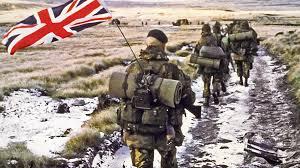
The Argentine commandos were limited by their superior’s lack of criteria to send them to fulfill missions in which they were not always properly supported.
On the other hand, the SAS had clear targets and could call for support on demand.
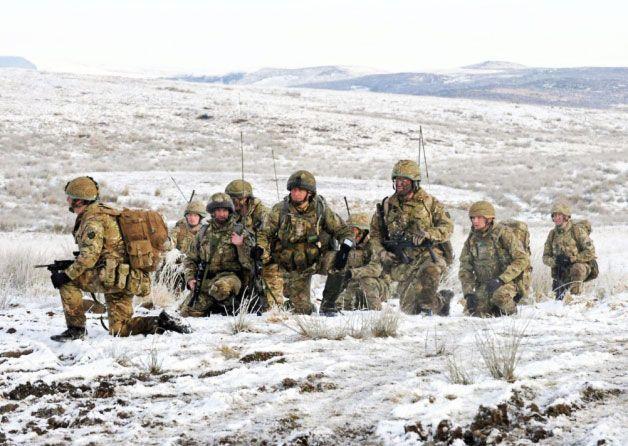
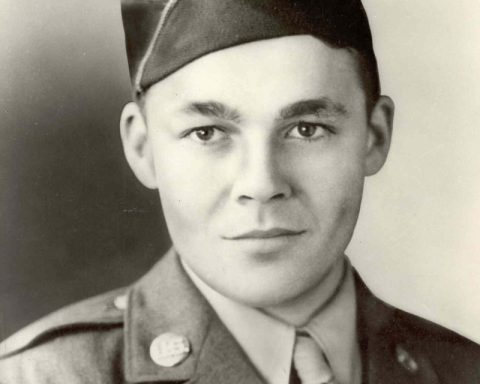
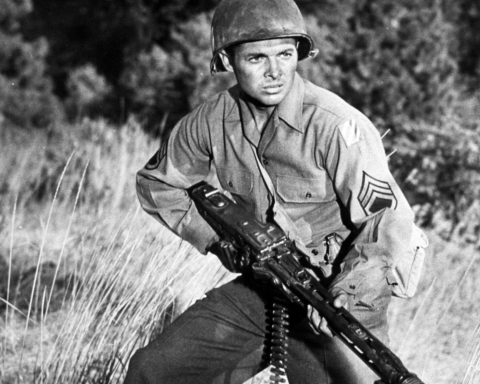
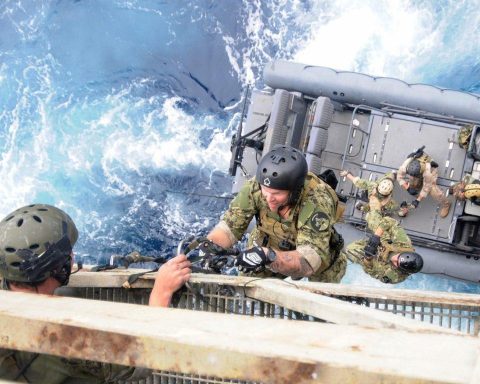


This article is totally wrong. The Argentine commando units proved to be totally incapable of acting at the required level, abandoned most of their missions and made innumerable mistakes more typical of novice recruits than professional commandos.
What an utter load of crap your facts are way off no research what so ever the SAS were bloody useless and caused more issues than any of the SF’s and now lie because they were so bloody useless. Top Malo was Mountain and arctic warfare leaders Royal Marines NO SAS they crashed on South Georgia because they were stupid risk takers and we lost two helos. They disobeyed all orders and killed a member of the SBS